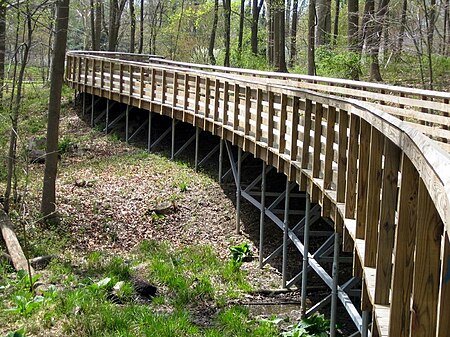Matthew Henson State Park

Matthew Henson State Park is a publicly owned greenway with recreational features that runs along Turkey Branch, a tributary of Rock Creek, in Montgomery County, Maryland. The state park is managed by Montgomery County under an agreement with the Maryland Department of Natural Resources. It was named for Maryland native and arctic explorer Matthew Henson.Matthew Henson Trail, an 8-foot-wide (2.4 m) hard surface hiking/biking trail, was completed through the park in 2009. The trail runs 4.5 miles (7.2 km) from the Rock Creek Hiker-Biker Trail near Aspen Hill northeast to Alderton Road near Layhill. The trail features 0.6 miles (0.97 km) of wooden boardwalk through environmentally sensitive areas.
Excerpt from the Wikipedia article Matthew Henson State Park (License: CC BY-SA 3.0, Authors, Images).Matthew Henson State Park
Randolph Road,
Geographical coordinates (GPS) Address Website External links Nearby Places Show on map
Geographical coordinates (GPS)
| Latitude | Longitude |
|---|---|
| N 39.077777777778 ° | E -77.064722222222 ° |
Address
Matthew Henson State Park
Randolph Road
20852
Maryland, United States
Open on Google Maps







